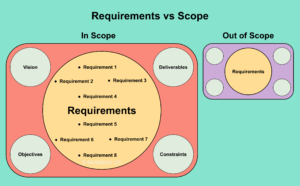Back to: ZOOLOGY 200 Level
I trust you’re doing great today and ready to continue this exciting journey through Zoology. It’s always a pleasure to learn alongside you. Today, we’ll be looking at a very important foundation in Zoology—the Characteristics of Living Organisms. Understanding what makes an organism “alive” is key to everything else we’ll learn, so let’s get right into it.
Scope, classification overview
Characteristics of Living Organisms
All living things, whether a grasshopper in your compound or a lion in the savannah, share certain features that make them different from non-living things. These features help scientists identify and study living organisms, including animals.

Let’s go through them one by one:
1. Movement
All living organisms are capable of movement in some form. This movement may be obvious, like a goat walking or a bird flying. In other cases, it may be subtle, like the slow bending of a plant towards sunlight or the movement of cells inside the human body.
In animals, movement is often for survival—seeking food, escaping danger or finding a mate. For example, a cat runs after a mouse, while fish swim in water to escape predators.
2. Respiration
Respiration is the process by which living organisms release energy from food. This energy is necessary for all other life processes. For example, when you eat rice and beans, your body breaks it down and releases energy you use to walk, think, and even breathe.
In animals, this usually involves breathing in oxygen and giving out carbon dioxide. However, some simple animals like earthworms can breathe through their skin.
3. Sensitivity (Response to Stimuli)
Living organisms are aware of their surroundings and can respond to changes. This is called sensitivity. Animals use their sense organs (eyes, ears, skin, etc.) to detect changes and respond accordingly.
For instance, if you accidentally touch a hot pot, your hand pulls away immediately. A cockroach quickly runs away when it senses movement or light.
4. Growth
All living things grow. Growth involves an increase in size and often in complexity. A chick grows into a chicken; a caterpillar becomes a butterfly. Growth may happen throughout life or stop at a certain stage, depending on the organism.
5. Reproduction
Living organisms have the ability to produce offspring. This is how life continues. Some animals lay eggs, while others give birth to young ones. For example, dogs give birth to puppies, while hens lay eggs that hatch into chicks.
6. Excretion
As living organisms carry out various activities in their bodies, waste products are produced. Excretion is the removal of these harmful waste products. In humans and animals, this includes sweat, urine, and carbon dioxide.
A fish, for instance, excretes nitrogenous waste through its gills and kidneys.
7. Nutrition
All living organisms need food for energy, growth, and repair. Nutrition is the process of taking in food and using it for life processes. Animals like cows eat grass, humans eat different types of food, and even small animals like ants gather food to survive.
8. Death
Lastly, all living organisms eventually die. Death is the final stage of life and it marks the end of an organism’s biological activities.

Summary
Living organisms are identified by eight key characteristics: movement, respiration, sensitivity, growth, reproduction, excretion, nutrition, and death. These features are found in all animals and are essential for life. Understanding them is the first step to appreciating the complexity and beauty of living things.
Evaluation
- List any five characteristics of living organisms.
- Differentiate between movement and growth.
- Give two examples each of how animals show sensitivity and nutrition.
- Why is excretion important in animals?
Keep going, my friend. Every lesson you complete brings you closer to becoming a top Zoologist. Your curiosity, consistency, and commitment are what set you apart. Keep learning with Afrilearn and prepare to shine even brighter in the next lesson!
